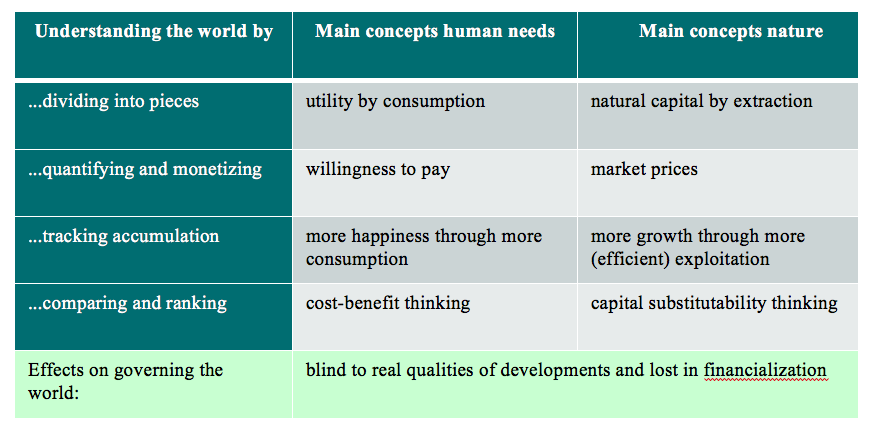4 Iron Cage Economics – The Need for a New Paradigm
“Just as abstract scientific theories are made real in our lives through the airplanes we fly in, the medicines we take, and the computers we use, economic ideas are made real in our lives through the organizations that employ us, the goods and services we consume, and the policies of our governments.” (Eric Beinhocker, Director Institute for New Economic Thinking (INET) Oxford)
One of the most popular theoretical concepts of the famous sociologist Max Weber is the ‘iron cage.’ In his book The Protestant Ethic and the Spirit of Capitalism (1904) Weber describes that the influence of Protestantism on social life decreased whilst capitalism (with its social structures, values, beliefs, worldviews and principles of bureaucracy) became a fundamental force in society. The social life and individual worldviews of citizens are shaped by these forces to such an extent that imagining an alternative way of life becomes difficult or feels utopian. The iron cage metaphor thus expresses how an economic system prevents change and perpetuates its own failings simply because those born into it reproduce its logics by seeking to fit in and make a living. For this reason, Weber considered the iron cage a serious obstacle to freedom. He also suggests that the modern economic mechanism of capitalism with its emphasis on creating material wealth and money might drive developments ‘until the last ton of fossilized coal is burnt.’
Transformation scholars use the term ‘path dependencies’ when they speak about social and technological structures; beliefs and worldviews or incentives; and process designs. All of these pre-structure which future developments or decisions are more likely than others. The key step in strategically unlocking those path dependencies lies in understanding the root causes behind their ongoing reproduction. And once we accept that humans make history, we see why reflexivity is so important when searching for solutions that stop perpetuating and open the iron cage.
And this is shown in chapter 3: the mainstream economic ideas of today still very much resemble those invented by economists in the 18th and 19th century and described by Weber as detrimental to sustainable wellbeing. Most importantly, it shows that the quantifying and money-measured concepts of the iron cage are blind to understanding human needs as much as they are blind to nature and its particular webs of life. On the other hand, insights from twenty-first century earth system sciences, ecological economics, sociology, well-being studies, psychology and neurosciences demonstrate the detrimental effects of economic growth- and competition-obsessed societies on the wellbeing of people and planet.
Inventing solutions for the goal of sustainable human need satisfaction and the recoupling of economic processes with those of nature therefore cannot be informed by the same thinking that underpins the unsustainable iron cage. What is required is a great mindshift backed by a new economic paradigm to repurpose development aspirations and its institutions accordingly.
